Noise Reduction Using Chevron Nozzles in Jet Engines, ANSYS Fluent
$160.00 $80.00 Student Discount
- This project simulates Noise Reduction Using Chevron Nozzles in Jet Engines using ANSYS Fluent.
- The geometry was created in SpaceClaim, and a mesh consisting of 1,317,762 elements was generated using ANSYS Meshing.
- The broadband noise source model was chosen to simulate noise generation and propagation.
To Order Your Project or benefit from a CFD consultation, contact our experts via email (info@mr-cfd.com), online support tab, or WhatsApp at +44 7443 197273.
There are some Free Products to check our service quality.
If you want the training video in another language instead of English, ask it via info@mr-cfd.com after you buy the product.
Description
Noise Reduction Using Chevron Nozzles in Jet Engines CFD Simulation, ANSYS Fluent
Description
In this project, noise generation from two types of nozzles (a regular one and a chevron nozzle) is simulated and analyzed using ANSYS Fluent software. Aeroacoustics is a branch of fluid dynamics dealing with the theory of noise generation in flows. Aeroacoustics phenomena are responsible for noise generation from aircraft engines, jet flows, drone propellers, etc.
Chevron nozzles are a type of nozzle design used on jet engines, particularly on the engine’s exhaust system. They are characterized by their sawtooth pattern on the trailing edges of the nozzle. This pattern helps to mix the exhaust gases more efficiently with the ambient air. Chevron nozzles break up the high-speed exhaust jets into smaller, more manageable segments. This helps in reducing the noise generated due to the shearing effect when the high-speed jet exhaust mixes with the slower-moving ambient air. The improved mixing facilitated by chevron nozzles leads to a quieter operation, which is particularly beneficial for aircraft operating near urban areas.
The geometry is designed in SpaceClaim and is meshed using ANSYS Meshing. The area around the nozzle is meshed unstructurally, while the rest of the domain is meshed structurally. The element number equals 989,310 for the chevron nozzle and 1,317,762 for the regular nozzle.
Methodology
The velocity in this simulation is sufficiently high, so the assumption of incompressible flow cannot be considered. Therefore, the Ideal Gas model was chosen for the air density. For both regular and chevron nozzle cases, the nozzle inlet diameter is 0.5 m, and the air enters the nozzle at a velocity of 250 m/s and a temperature of 700 K. Surrounding the nozzle, air flows through the domain at a temperature of 300 K and velocity of 200 m/s.
The noise generated by the jet flow shear layer comprises a broad range of frequencies. Consequently, the Broadband Noise Source model was utilized for modeling the generation and propagation of acoustic waves.
conclusion
Contours of temperature and Acoustic Power Level (dB) are presented. At the plate 9 meters downstream from the nozzle, the area-averaged acoustic power level generated by jet exhaust in two cases is calculated: for the regular nozzle, it’s value is 8.32658 dB, and for the chevron nozzle, it’s value is 6.1478 dB. Therefore, this simulation shows that the chevron nozzle generates approximately 25 percent less noise.

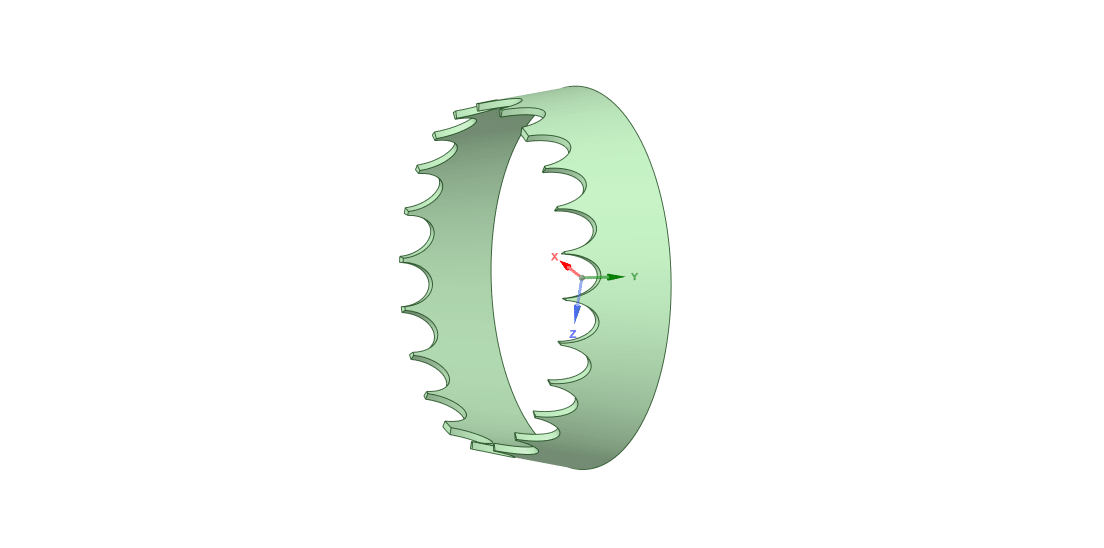
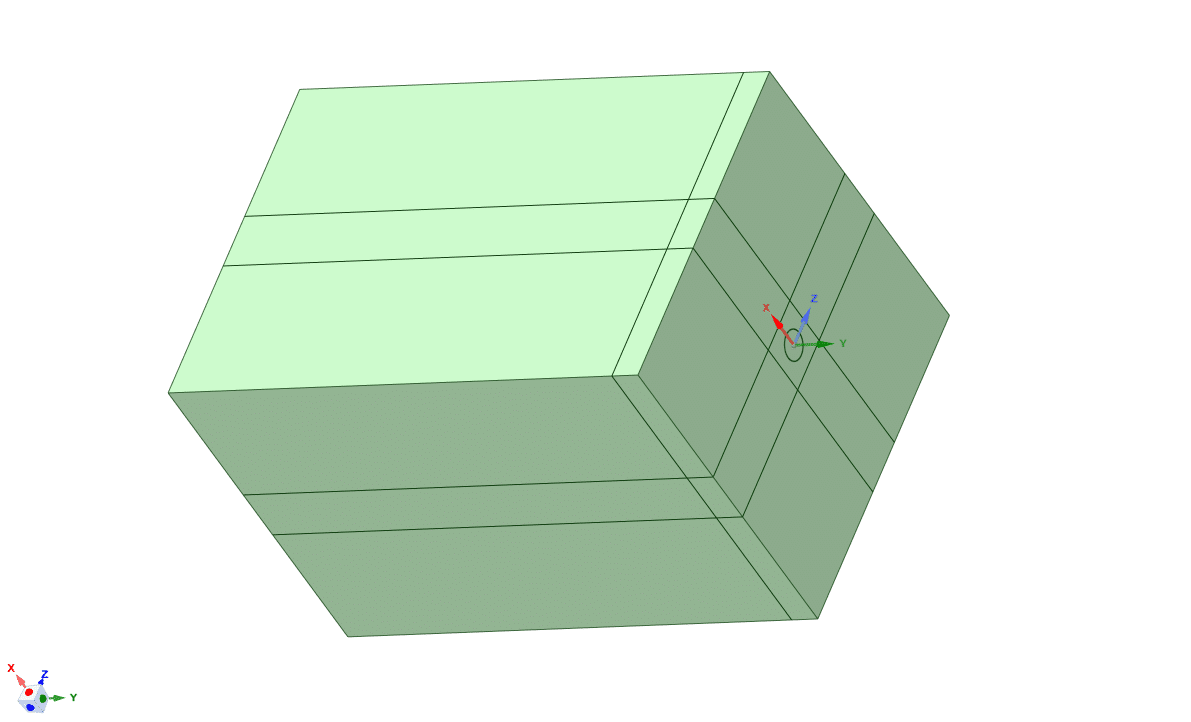
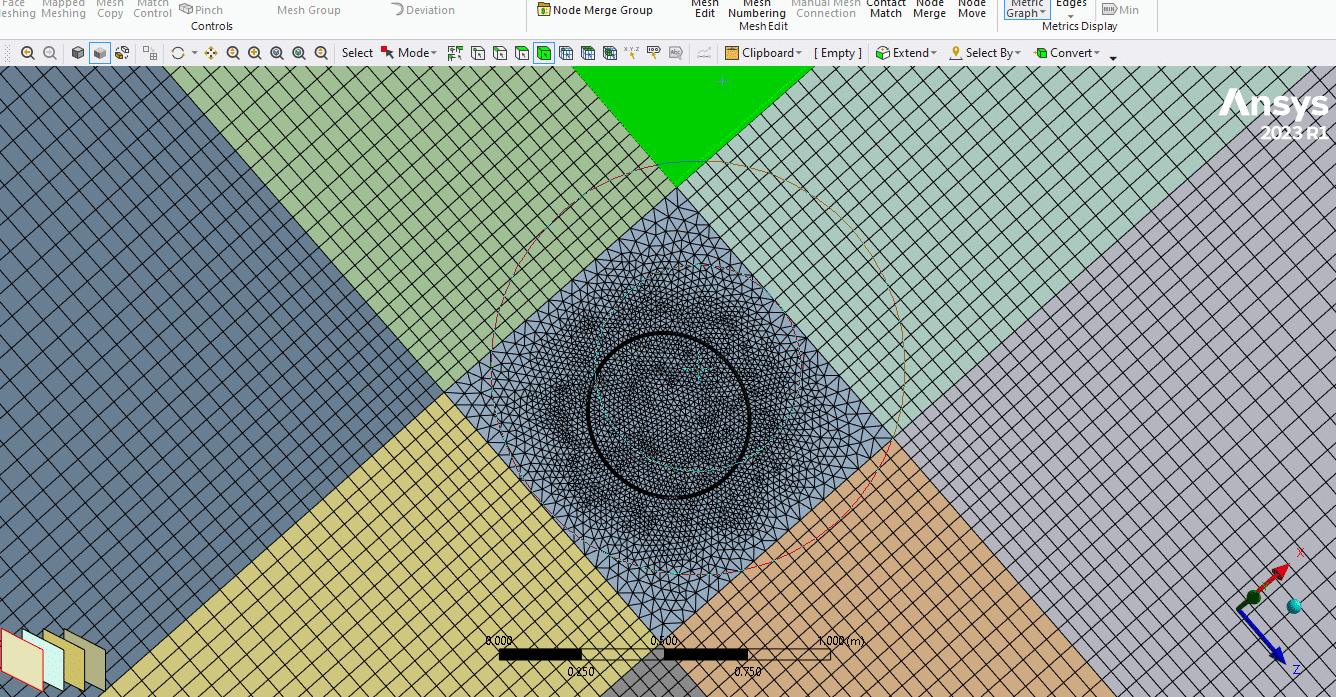
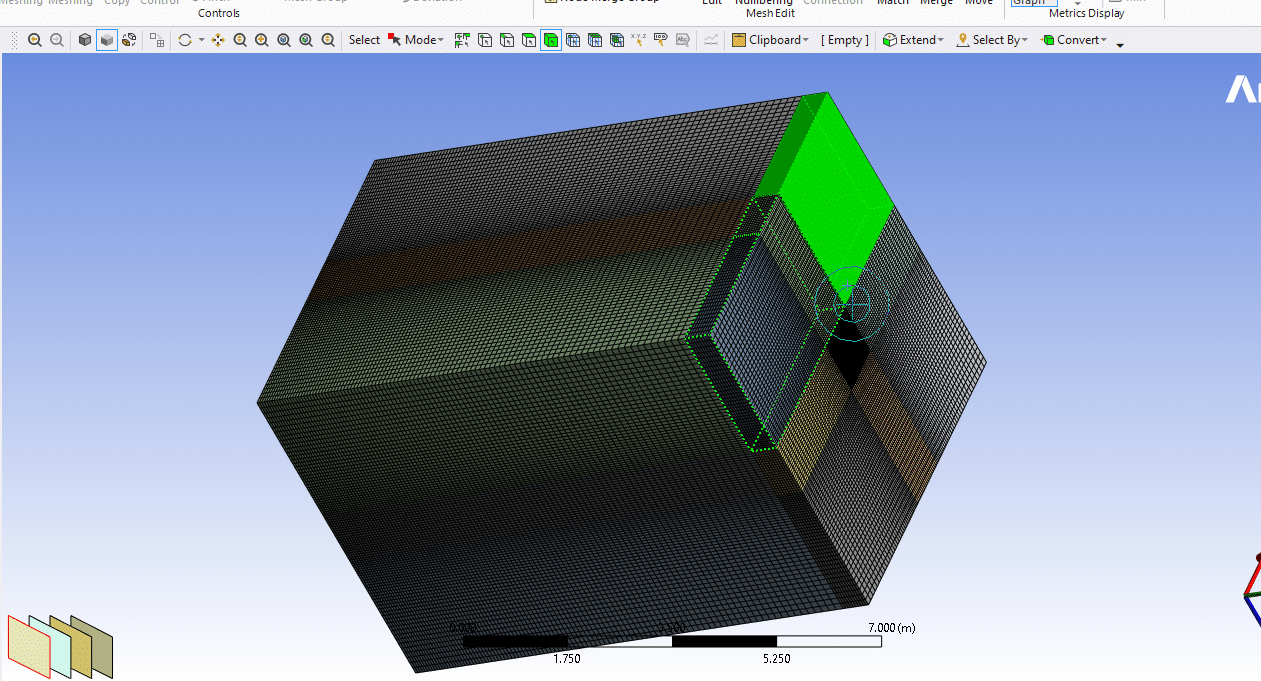
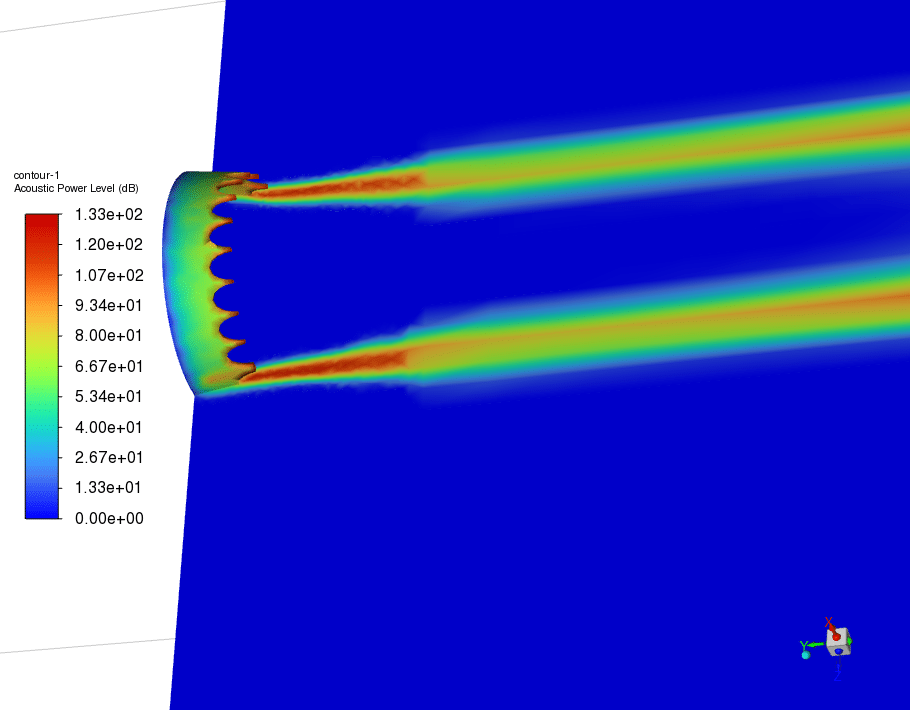
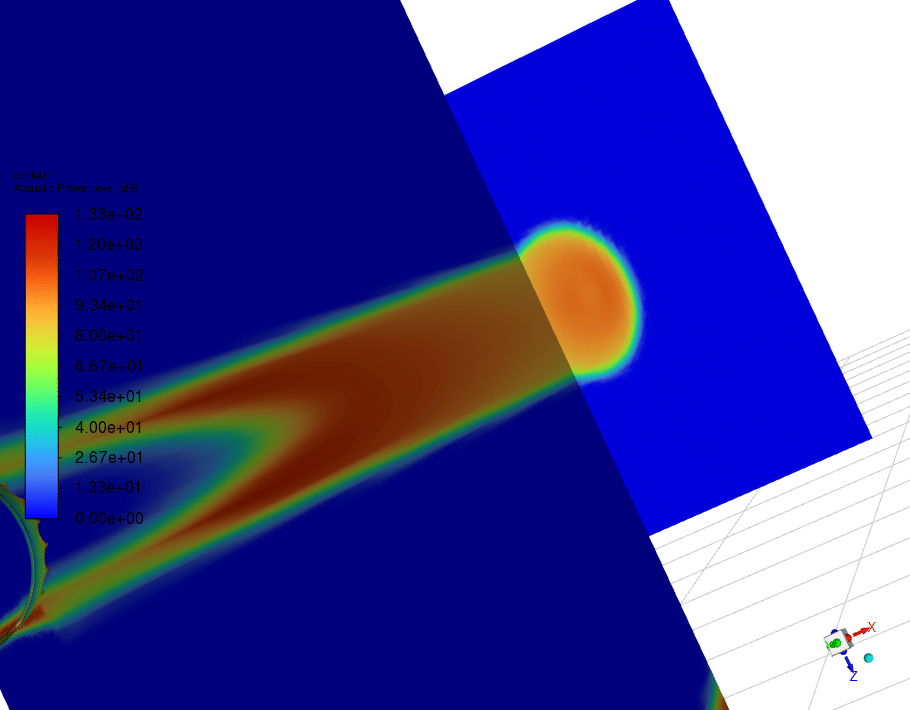
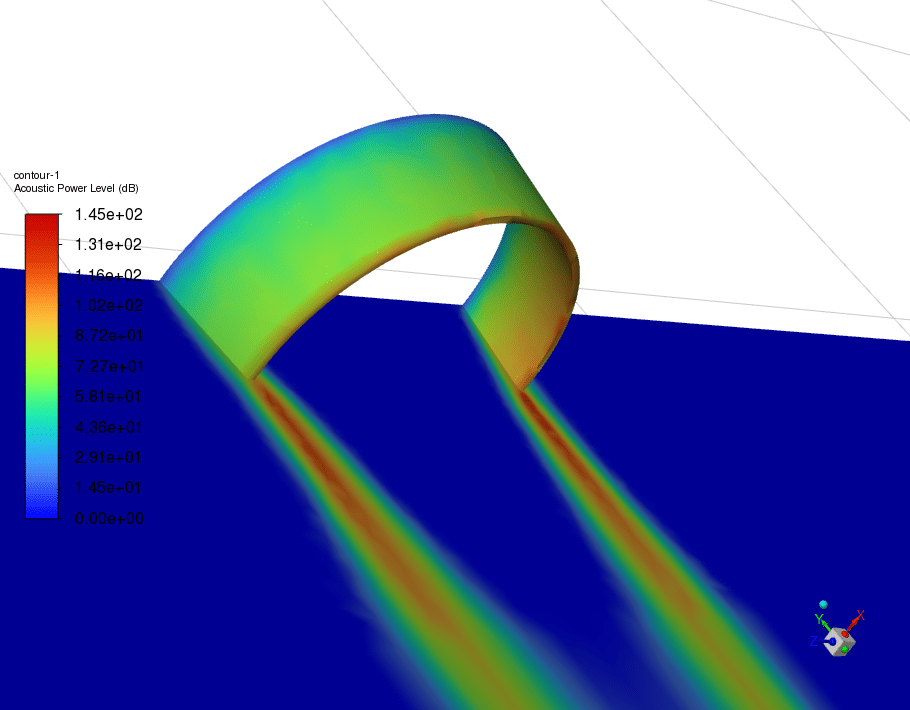
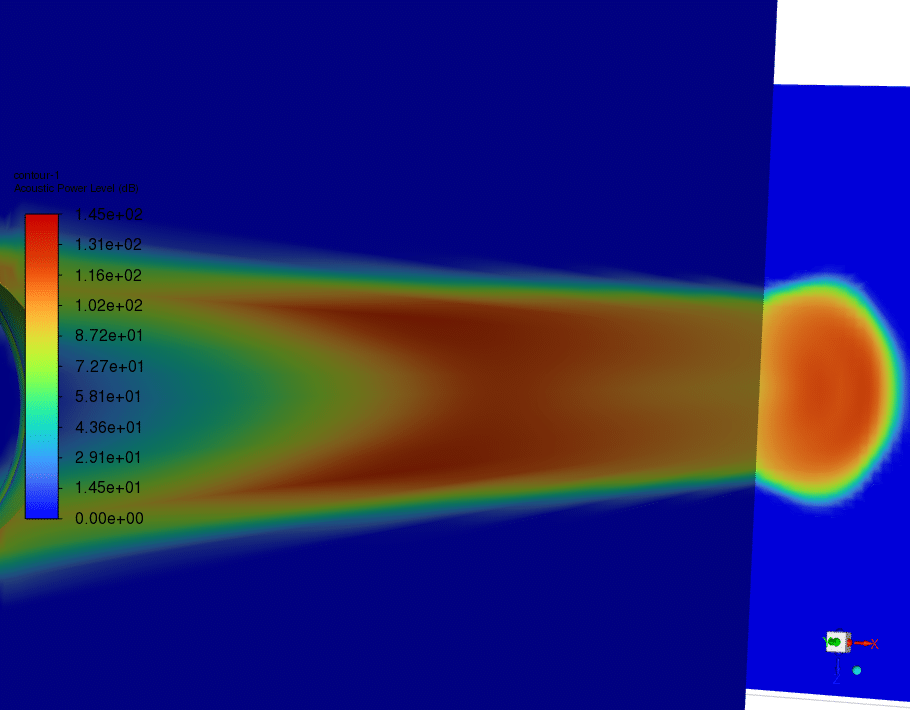
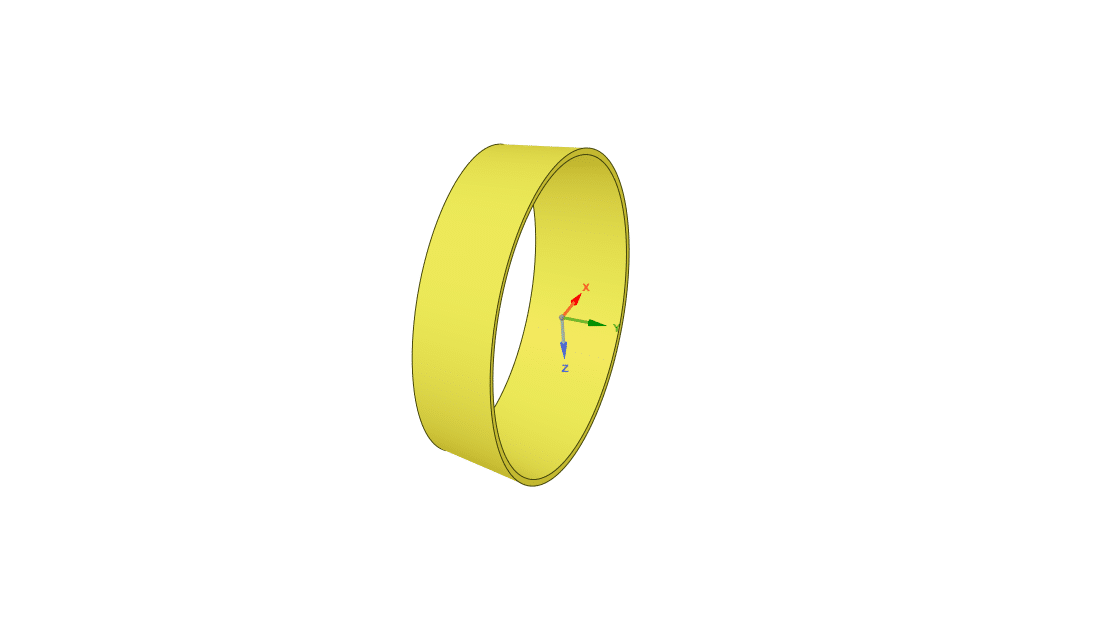
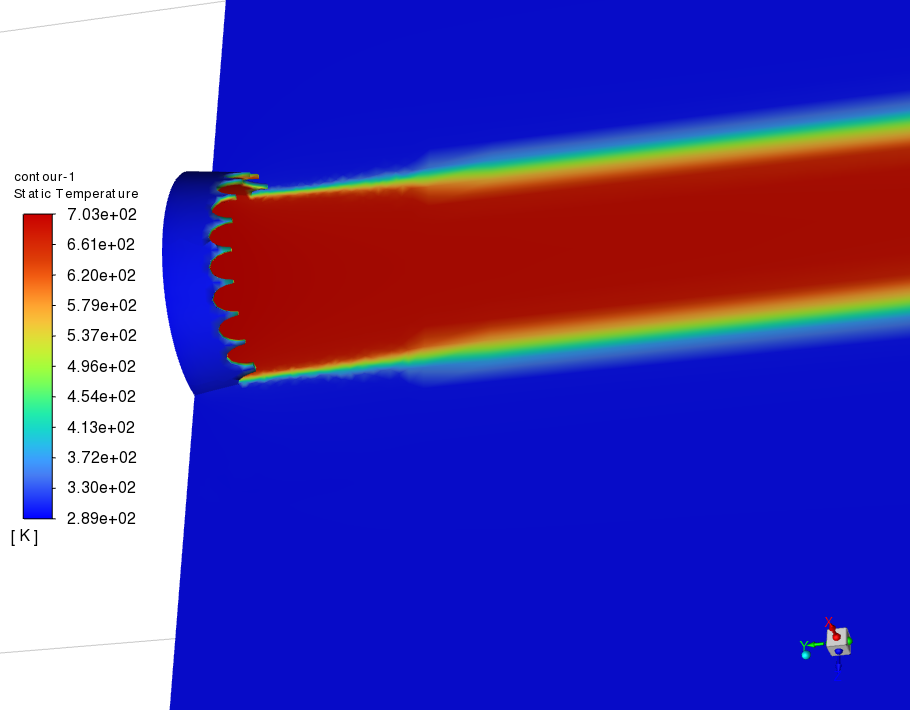
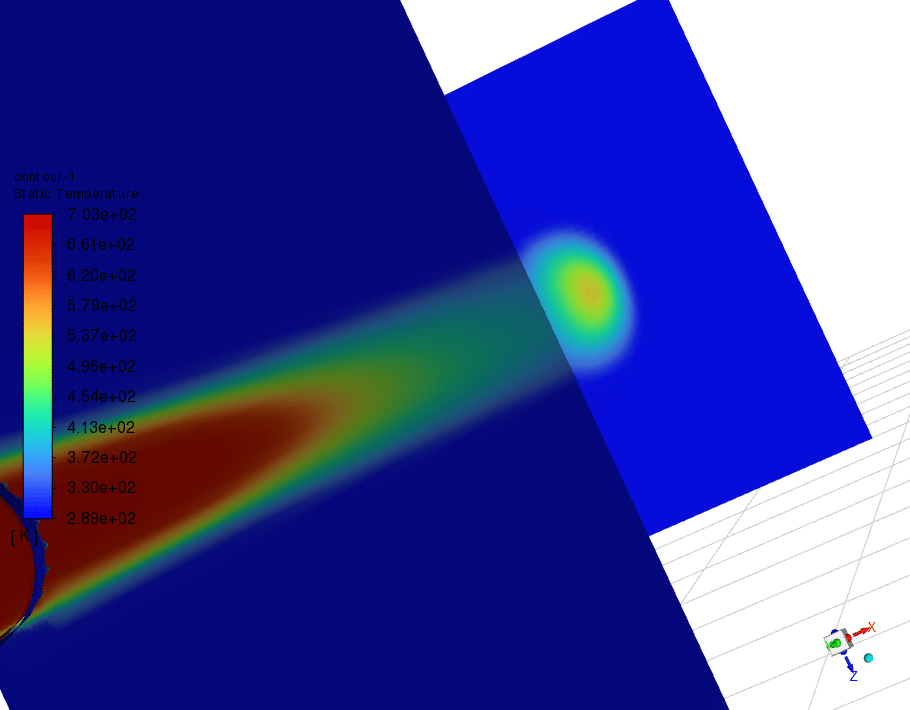
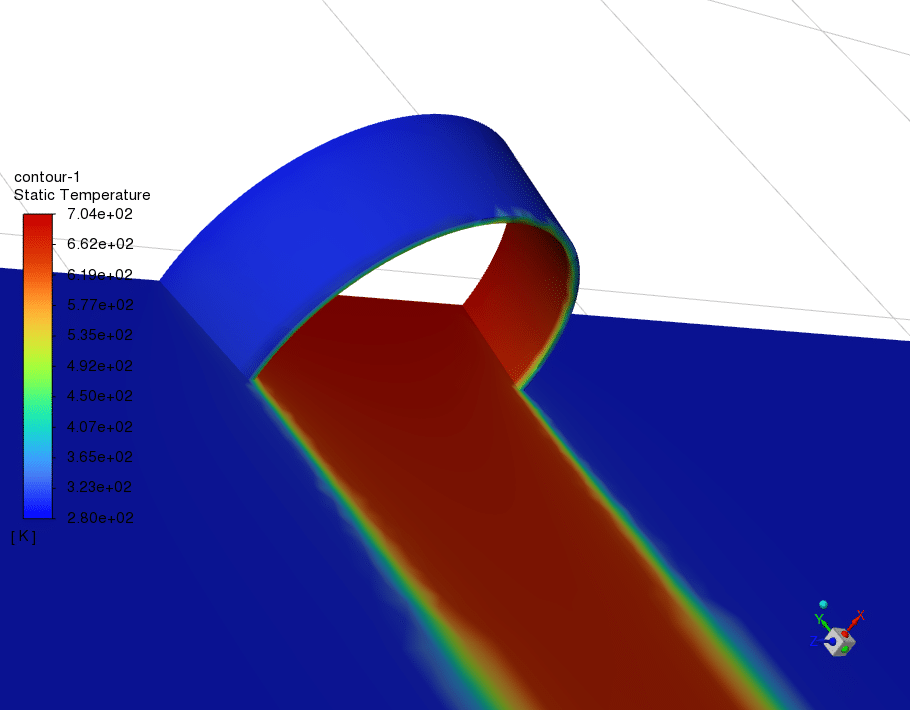
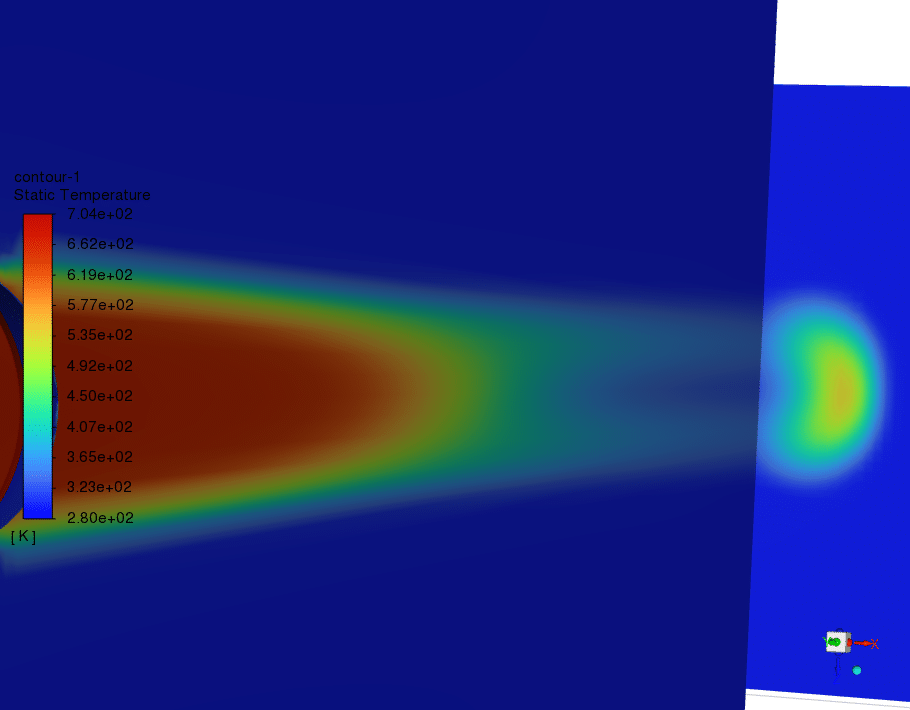
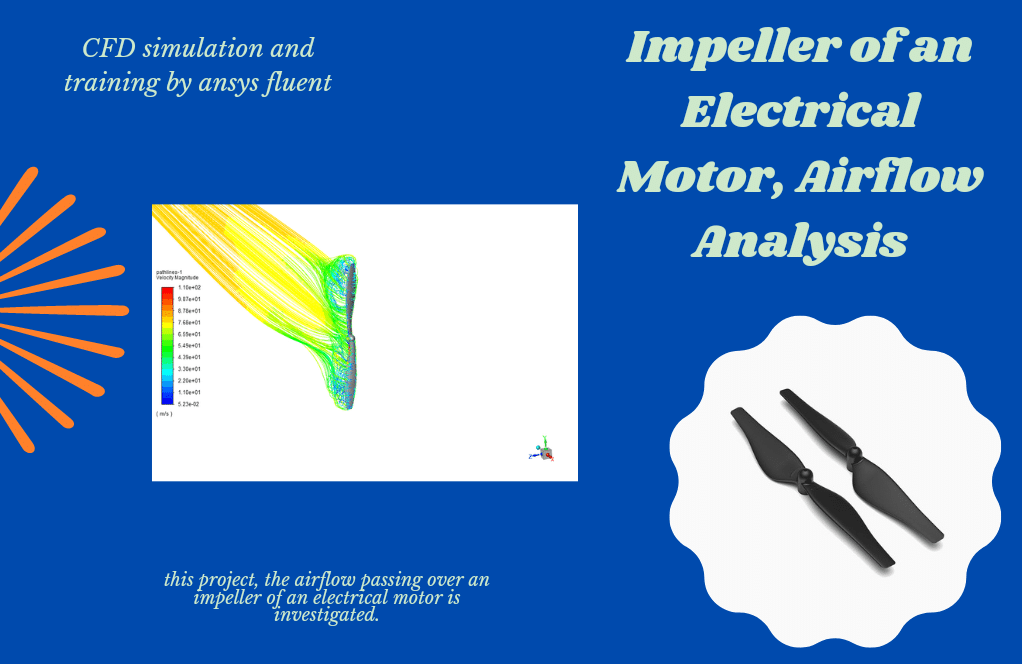
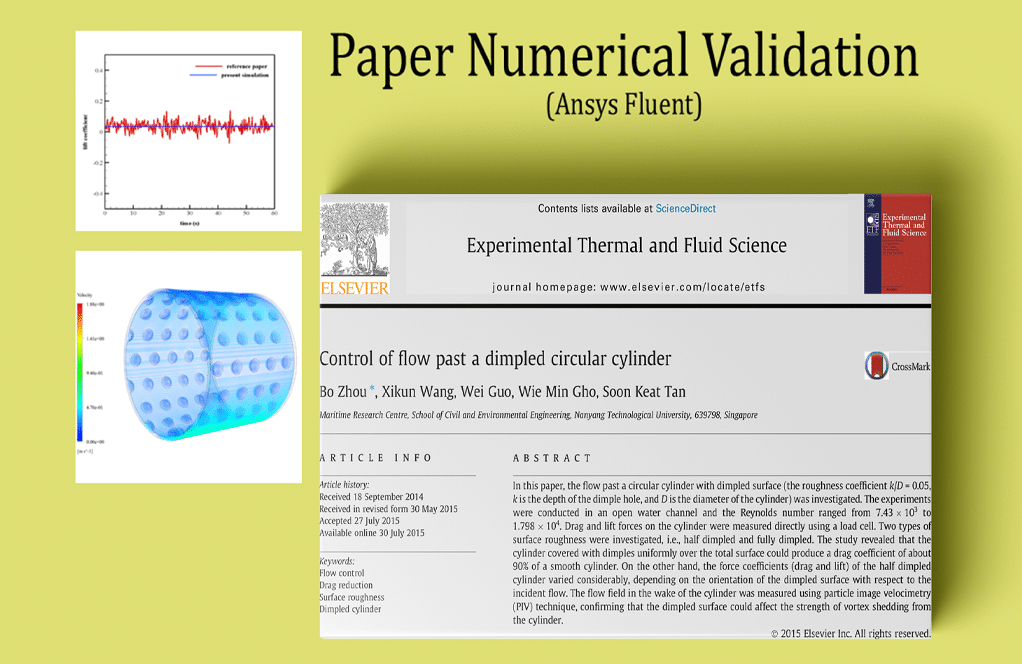
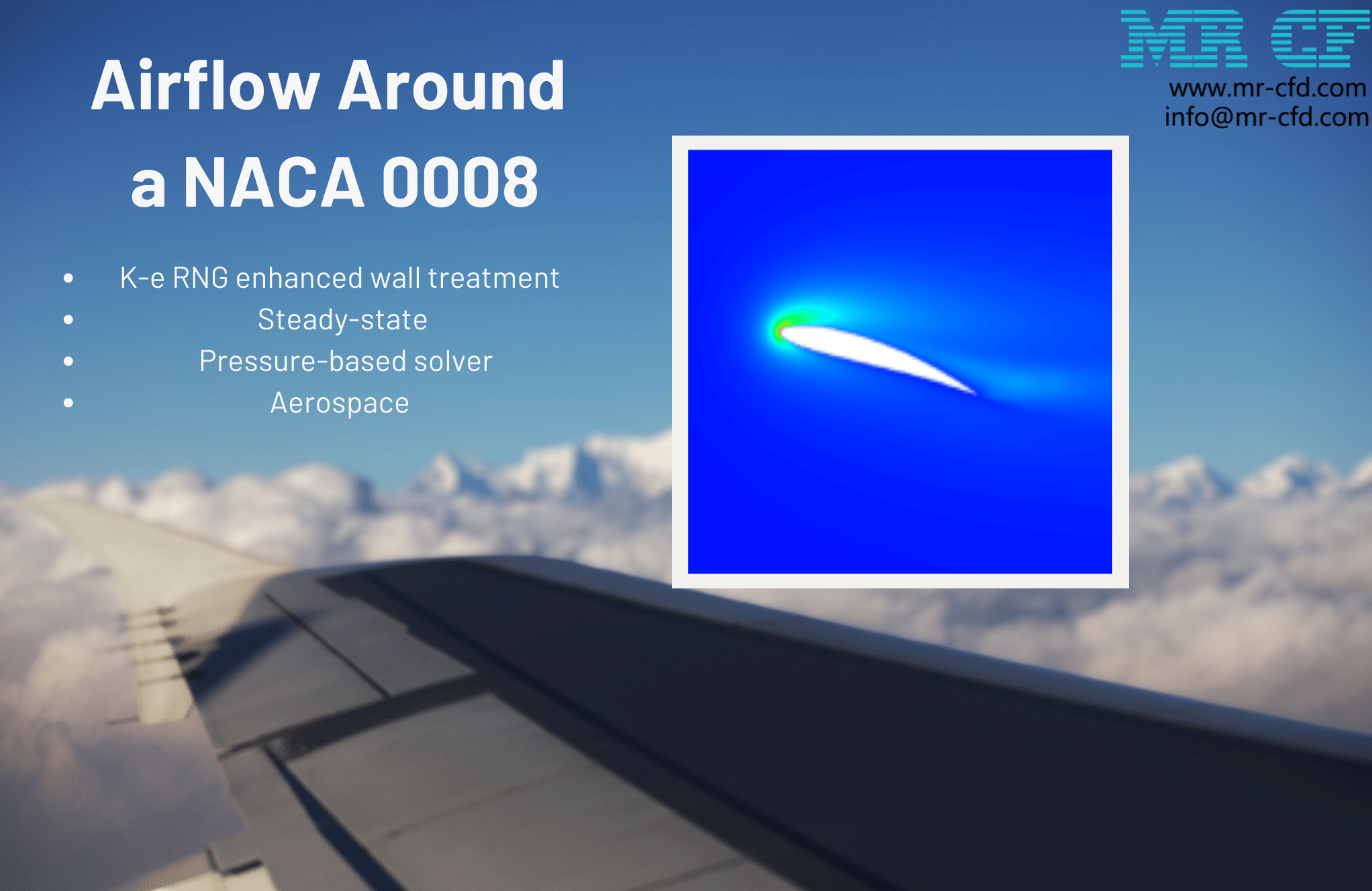

Reviews
There are no reviews yet.